CORPORATR CAFETERIA DESIGN
Introduction
There’s something about food that brings people together, whether they’re chatting in the kitchen or sharing a meal. The cafeteria is where coworkers, work, and the organisation as a whole come together. Cafeterias are more than just places where people eat. This is a place for coworkers to connect and work together. To keep employees going all day, a cafeteria should be full of energy and get things done. The place should feel both stylish and cosy. In the business world, a cafeteria is a big part of making things feel more casual.
In the case of one company, a cafeteria, fine dining restaurant, and coffee shop were seen as a chance to do just that—to give their employees a unique, interesting place to meet. Our client wanted to give people a place to go that was different from its main campus but still had the same feel.
Helping to find and keep good employees – It is all about talent attraction and retention!
The facility planner for the company said that the project helped with a key goal of attracting and keeping good employees. The company wanted to improve the existing space and add a restaurant for employees to use at the end of the day in order to make the environment better and improve the employee experience.
Case for Human Centric Cafeterias Design
Where does work take place?
Today’s business tasks are more varied and harder. Workers are becoming more mobile and spread out. They often leave the office to go to a coffee shop or somewhere else, which puts them far away from their coworkers, the organization’s resources, and its culture.
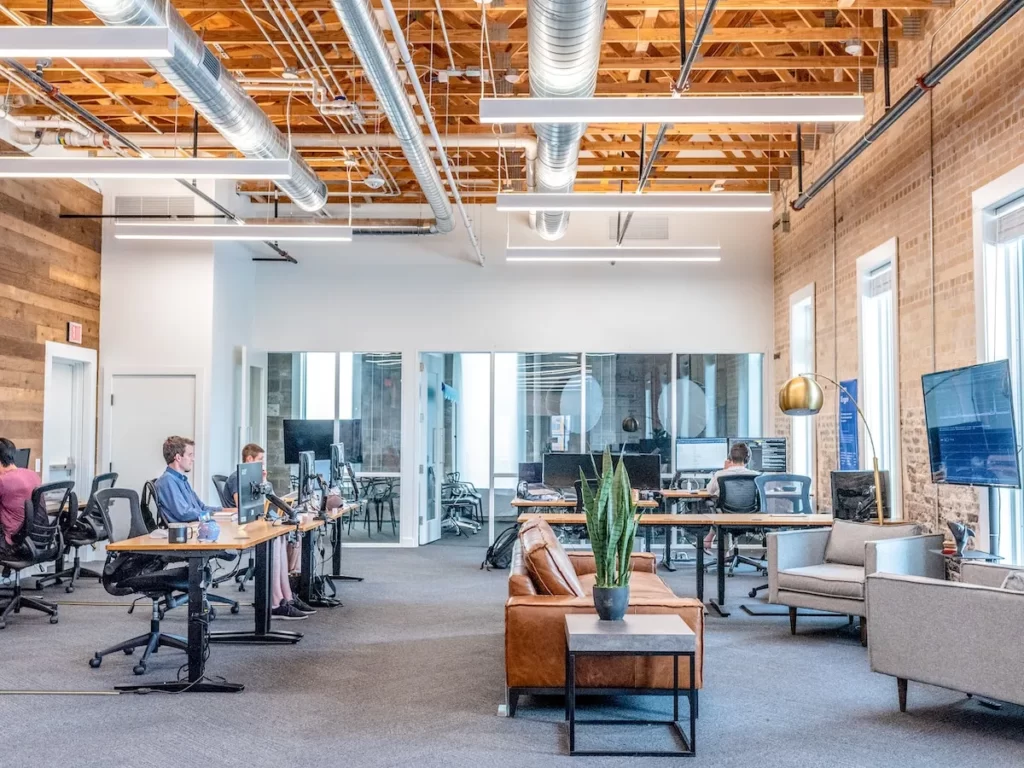
Making places that people want to visit
A Cafetaria or Work Café is a space that is always changing and brings people together with their coworkers, their work, and their organisation. It turns places like corporate cafeterias into places where people can connect, work together, focus, and come up with new ideas.

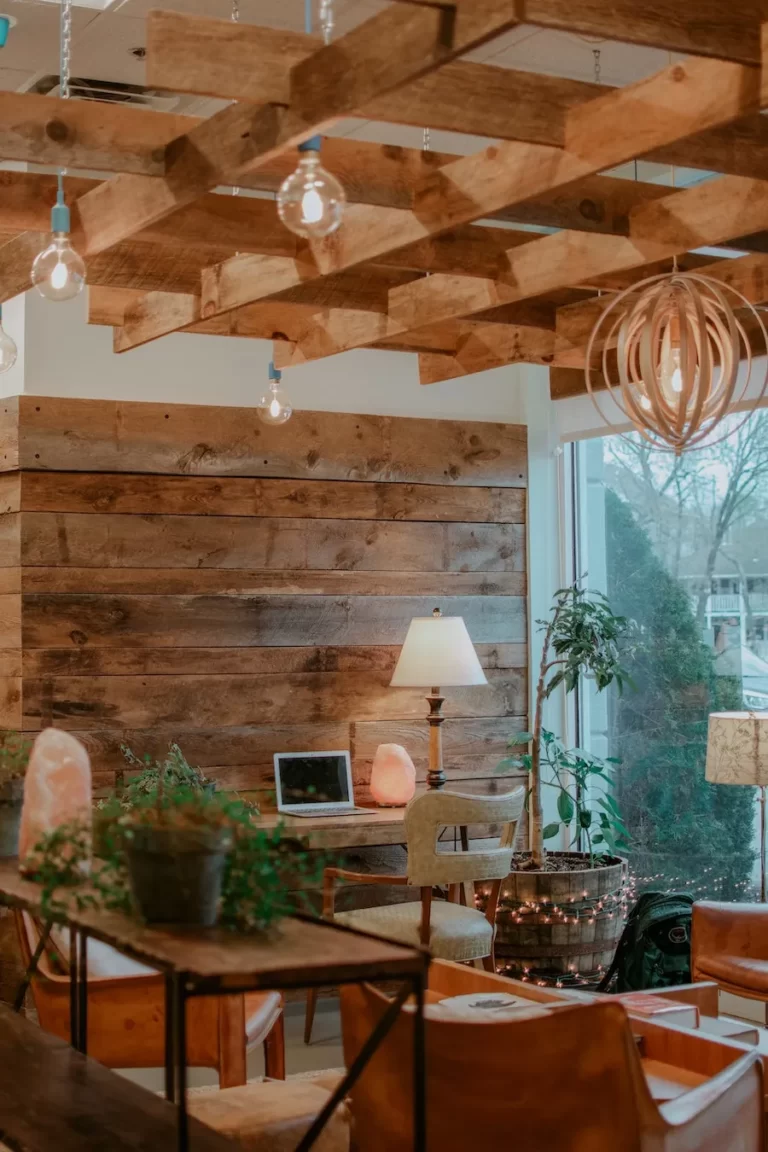

On-Site Location That Gets Employees Involved
Unlike a traditional corporate cafeteria, a contemporary work café is a place where you can both work and eat. This makes use of underutilised space and helps employees be more productive and happy in measurable ways.
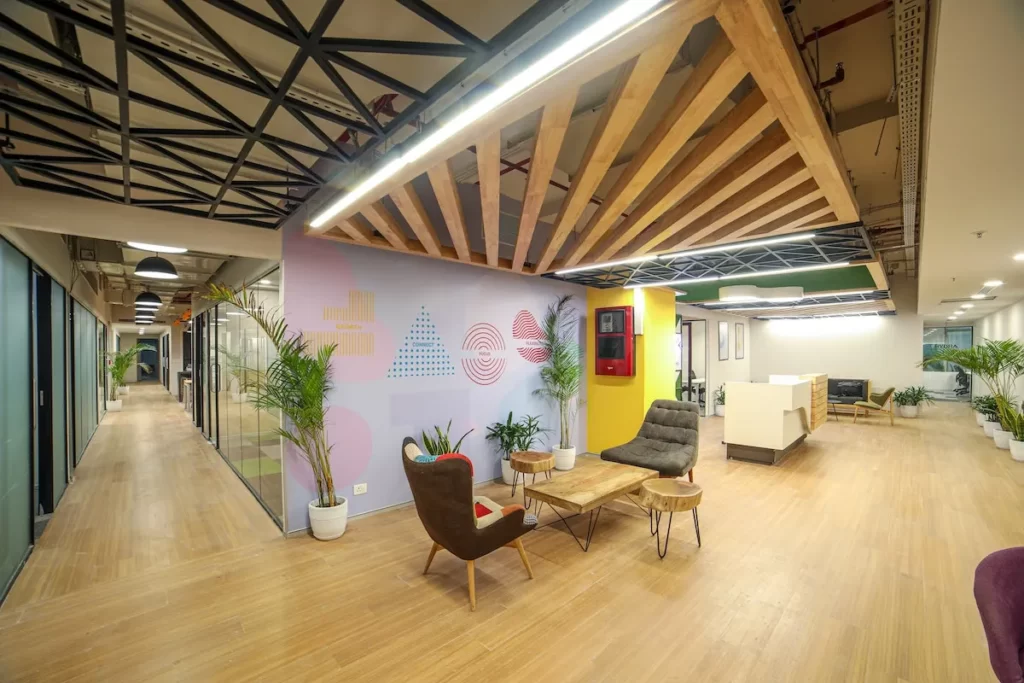

Third places on-site
Mobile technology lets employees work anywhere, whether it’s at home, in a third place, or at a place where they can work and socialise at the same time. But off-site places like coffee shops make it hard to work together with other people and don’t offer much in the way of privacy, ergonomics, or a good place to work.
Instead, give your employees a third place on-site where they can take a break from their usual workspace, choose from spaces for one person or a large group, and stay close to their coworkers and the company.
Taking up space for a short time
As work becomes more mobile and companies start to use shared desks, more and more employees want their own space, even if it’s just for a short time. Here, they can work with others in formal and informal settings, as well as on their own, get their minds back on track, and feel refreshed.
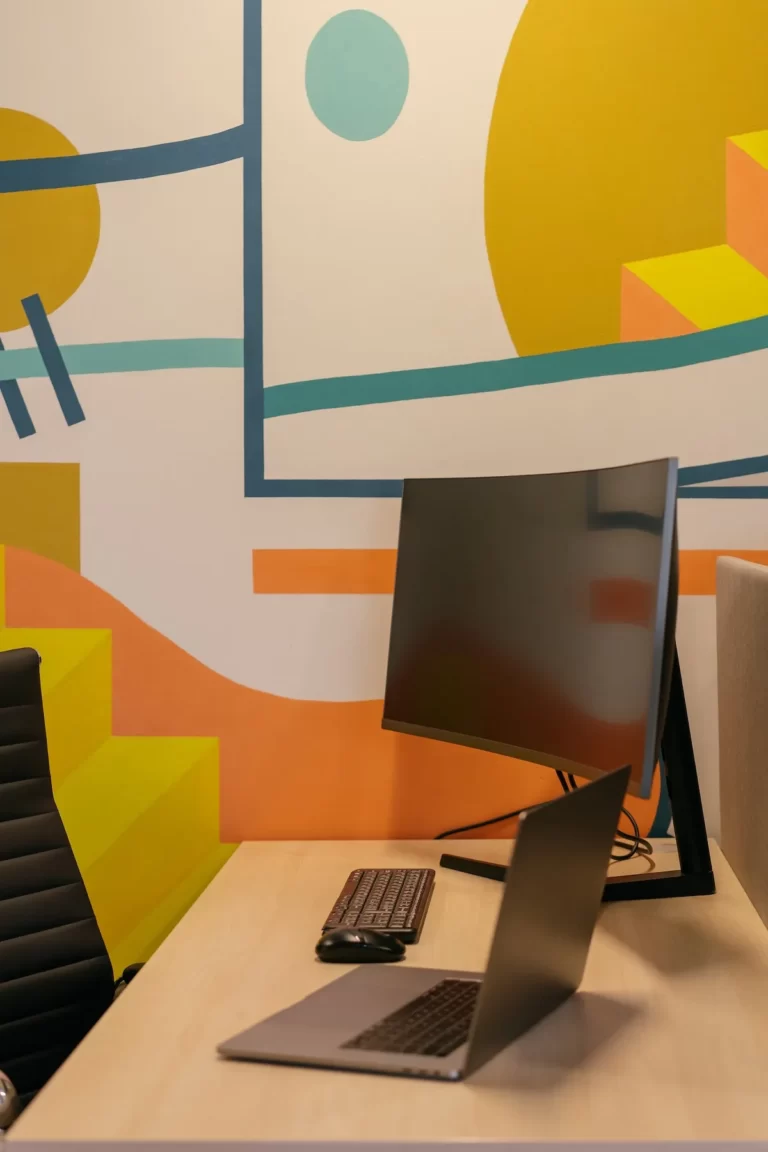

Wellbeing
It’s important to know what workers need for their mental, physical, and emotional health. By knowing how these three things work together, we can create work environments that are best for people’s overall health and happiness.
Cognitive
A WorkCafé is a multisensory space where workers can choose the level of stimulation they want based on their task and mood. There are bright, high-energy areas and quieter spaces. Cognitive health depends on being able to choose and control one’s workspace.
Physical
A WorkCafé provides refreshment for the mind and body, not just during mealtimes but also during early and late work sessions. It also gives people access to outdoor spaces. It also helps you sit, stand, and move in ways that are good for you.
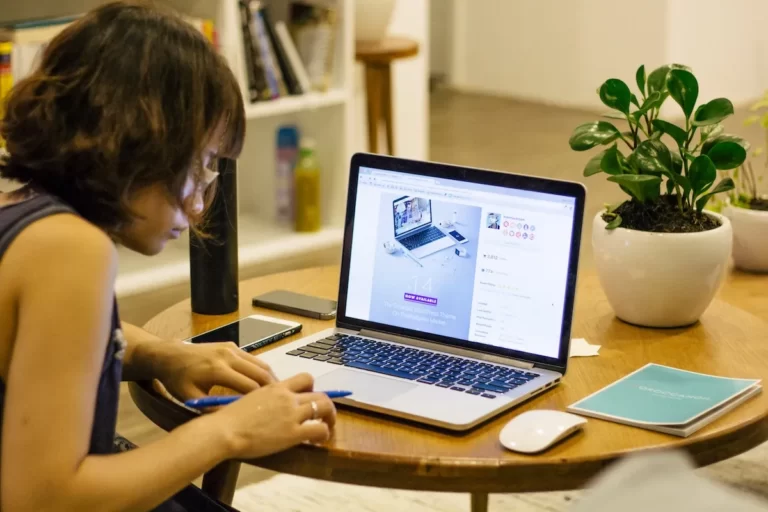

Emotional
Space can help people connect over coffee or a meal, make it easier to meet and work together in different places, and give users in different places easy ways to connect through well-integrated technology. All of these things are important for emotional health.
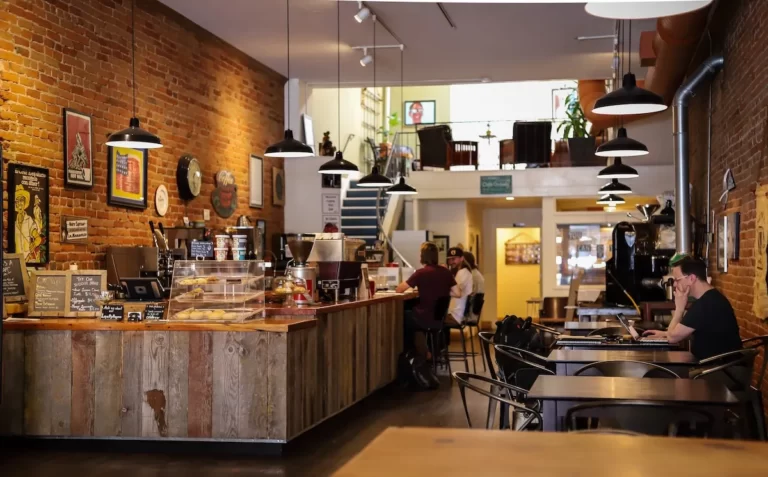

Some statistics to help you consider upgrading your corporate cafetaria
Building More Trusting Relationships
When employees eat together in large groups, they are 40% more likely to talk to each other outside of lunch.
Building Brand And Culture



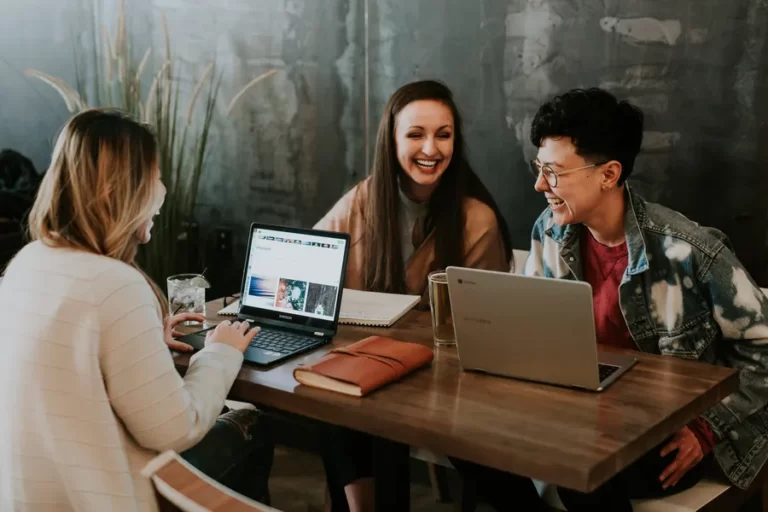

Supporting Wellbeing




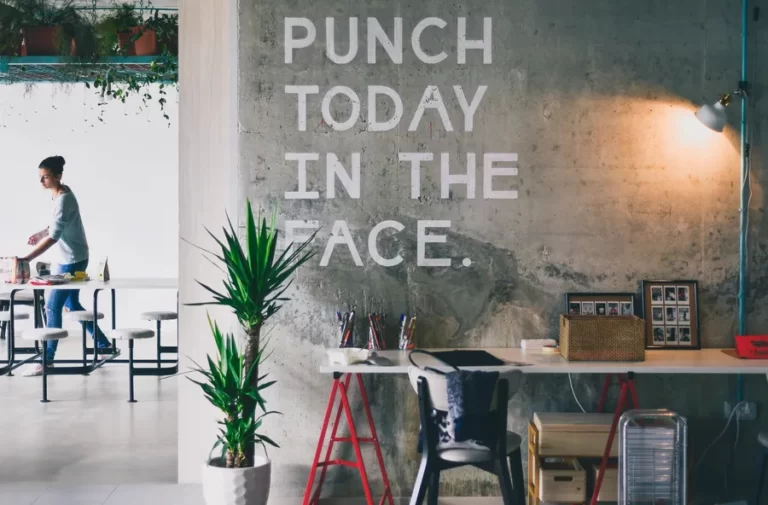

Motivations from around the world
Let us explore why the cafeteria at work is the key to your wellness plan – office design ideas.
If the kitchen is the heart of the home, then a pantry or cafeteria in a corporate office must be the same thing. Still, when planning a wellness plan for the office, many companies ignore the cafeteria and put all their attention on gyms, spas, and other luxuries instead.
This can be a huge missed chance, though. The cafeteria may not be anything special, but it is a simple and effective way to help employees stay healthy, happy, and emotionally well. Here are a few reasons why the cafeteria or pantry is so important for making sure people are healthy, boosting morale, and getting people more involved in their work.
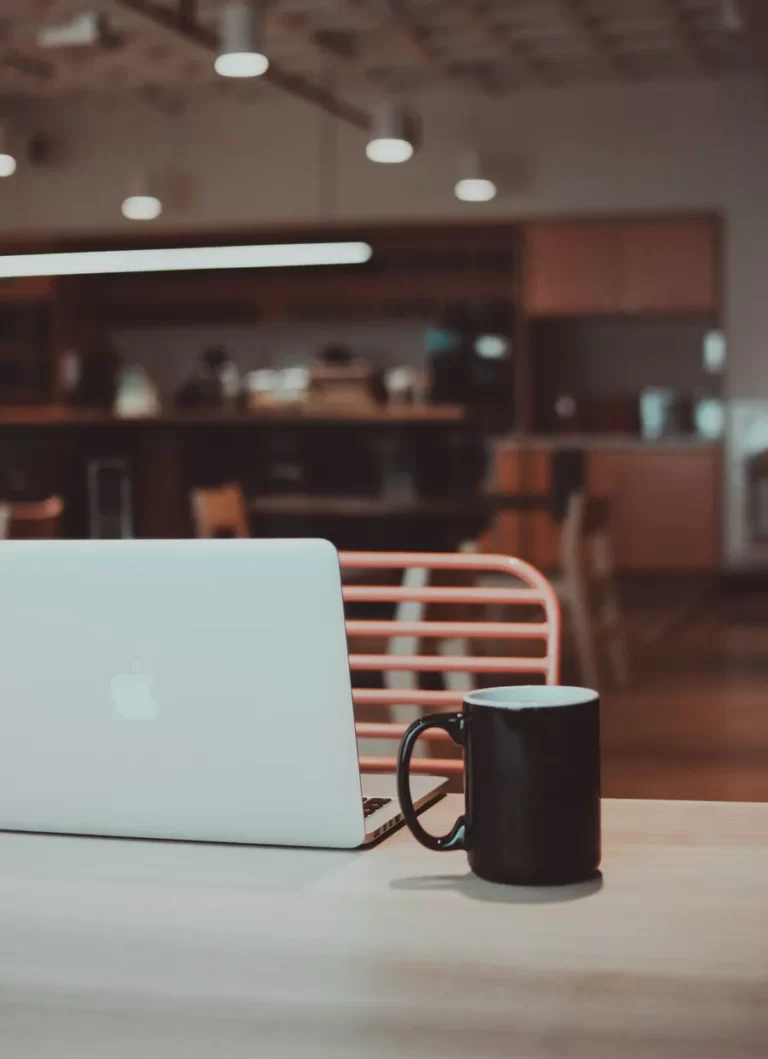

A place to start with health, food, and wellness
People now pay more attention to both what they eat and how they eat it because of the pandemic. Since they’ve been working from home for a year, they’re used to taking a short break during lunch to eat away from their desk with their family. Now that they’re back at work, more people will be excited to keep up these mindful lunchtime habits.
The cafeteria can then be the starting point for your plan to make your workplace healthier. Imagine a room that is open and has a lot of natural light and a great view. Biophilic interior design elements like a wood-beamed ceiling, long wooden tables, and hanging fern planters, along with the pantry’s wall-to-wall windows, make it feel very cosy and welcoming.
Since the cafeteria is where people go to relax and refuel, it is a great place to promote healthy eating habits, whether through direct messages or more subtle methods. At many offices, more than 50% of food is made up of fruits and vegetables. People are more likely to choose these healthy options because they are in plain sight at the front of the food line. You can also place a lot of herbal teas, milk, fruits, and nuts in the pantry to encourage healthy snacking throughout the day.
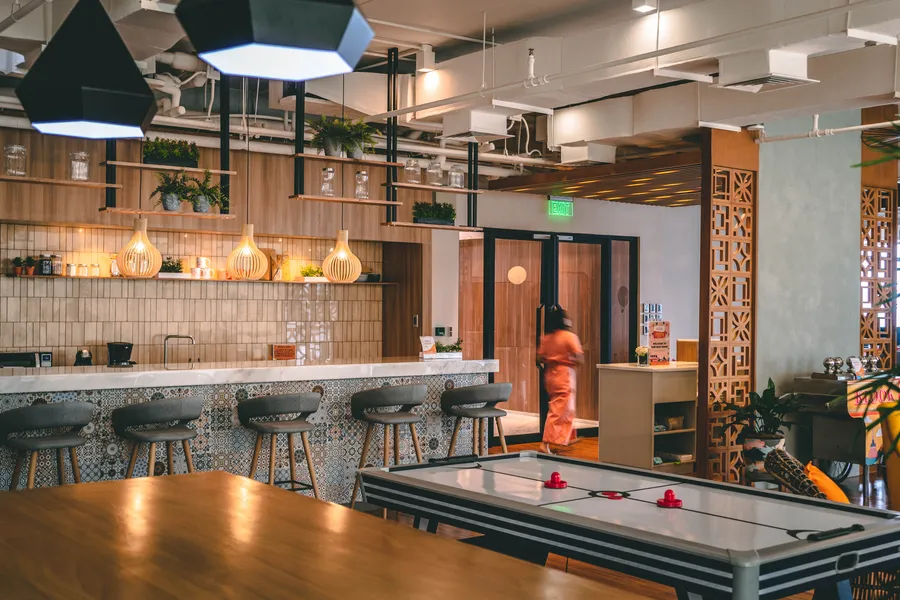

A place where people can get together
People don’t just eat in the pantry or cafeteria; it’s also a place where they can chat with each other. Good design can encourage and make it possible for people to interact in a natural, safe way. We recently worked with a tech company to make a great 600-seat cafeteria that is both a place to eat and a place to have fun. We put in a large island counter that can be used for anything from cooking demos to a barista station. There are different places to sit all over the island, so people can relax while they enjoy these café items. More on this later.
Cafeterias use food and drink trends to offer their customers things like a cold brew on tap and cappuccinos made to order at the coffee bar by trained baristas. When it’s time for lunch, the café staff uses the hidden stoves and cooking ranges in the pantry to set up a hot food buffet. To make this atmosphere even more social, many corporate offices have opened their café to employees and clients so that they can meet, talk, and come up with ideas over breakfast or coffee.
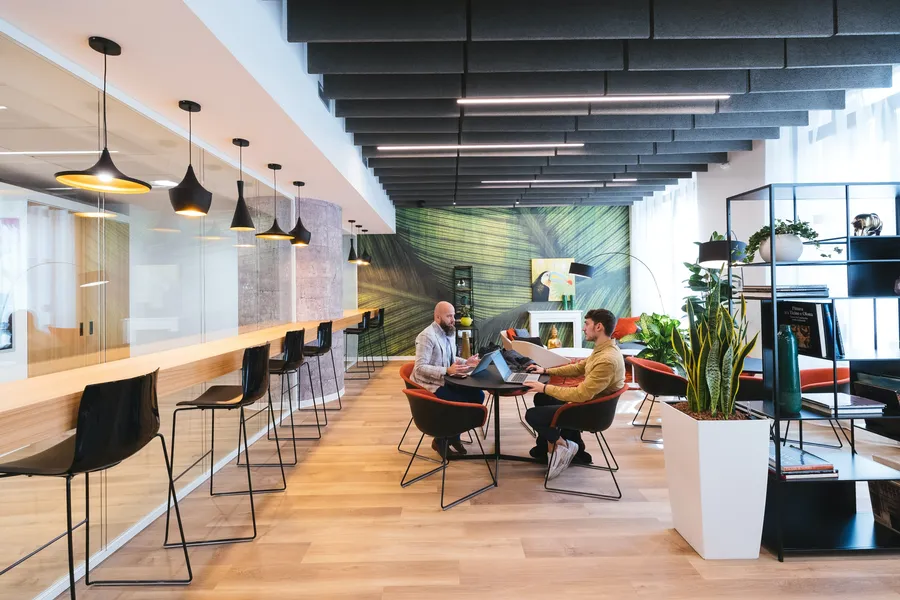

A place that feels like home
When employees go back to work after a break, they will probably miss some of the things that made them feel at home. The cafeteria or pantry can be the perfect place to meet these needs. The atmosphere in these places can be cosier and less serious than in places that are only for work. This is where you might want to put some comfy chairs, fancy bar stools, soft lighting, and lots of plants. You could also put a wide-screen TV and a comfy sofa in one corner so people can watch games or movies together.
As a place known for its comforts, this is a big place for multisensory experiences. Even if people are just taking a quick coffee break, the smell of coffee brewing, the soft hiss of the milk frother, the sight of fresh baked goods lined up on the counter, or the feel of sinking into a soft chair can all be used to calm their senses and make them feel at ease.
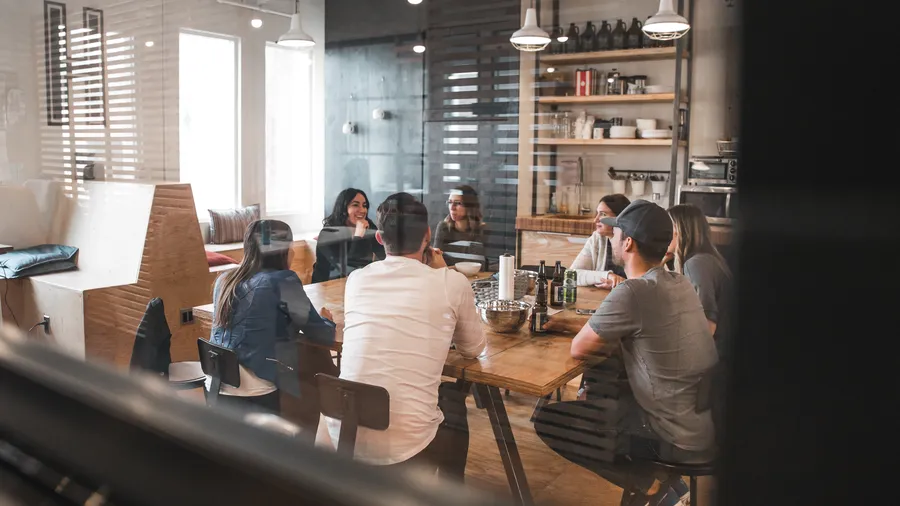


A different place to clear the mind
Sometimes, the things that help people relax are also the things that get their creative juices flowing. Sitting still and staring at a screen can get boring quickly. When this happens, the kitchen or pantry can be the perfect place to help people get out of a mental rut.
This is planned for in a well-made kitchen or café. It has extra plugs, big TV screens, and good WiFi, so employees can come here to work for an hour or two, preferably with their favourite drink. But when designing a pantry or cafeteria, you should also keep in mind that these places might be used for larger, team-wide or company-wide discussions as well. There are plugs, screens, and projectors in the staff café, while seating rather large groups at once. Moveable walls morph spaces connecting and creating spaces that otherwise were thought of as disparate. This makes it perfect for all kinds of events, from formal town halls to less formal get-togethers and movie screenings.



Elements of Corporate Cafetaria Design
How to Design the Perfect Workplace Cafeteria: Here are some ideas for how you can design your office cafeterias.
Keeping a good brand identity in mind
Employees are usually not too focused on or busy with work in the office pantry, so this is a great place to reinforce the brand’s culture and identity. The key is to do this in a way that is subtle but still stands out. One of the world’s largest beverage corporate offices is a great example of this. As soon as you walk into the pantry, you’ll notice the unique light fixtures. They’re made from the brand’s famous curved glass bottles, so they’re easy to spot. Also, these upcycled bottle fittings show that the company cares about the environment.
In the same way, Arisaig Partners’ pantry design shows that they are from Singapore. Even though the pantry is stylish and up-to-date, with shiny counters and bar stools, it has a traditional Peranakan tile backsplash on one side. Such small details can be a great way to give a workspace a sense of its location. Global companies may find this especially helpful when it comes to building a local identity. From an emotional point of view, a strong, memorable brand identity helps people feel like they belong and boosts company pride. It makes employees feel like they are a part of something bigger than themselves and that everyone is working toward the same goal.
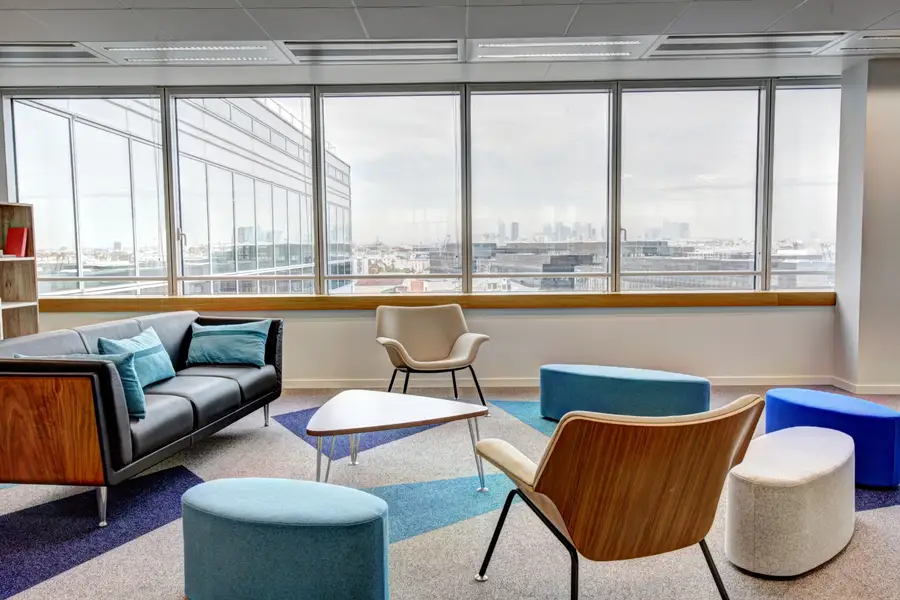

Setting up a cafeteria at work
Getting people to want to go to a workplace cafe where they can work, meet, collaborate, and investigate requires balance between a number of needs. Public – Putting employees in touch with other people.
Public – Putting employees in touch with other people. Private – Offering places to be alone and quiet.
Private – Offering places to be alone and quiet. Socialising – Creating more chances for meetings and conversations to happen
Socialising – Creating more chances for meetings and conversations to happen
on the spot. Working – Supports working and connecting with other people at the same time.
Working – Supports working and connecting with other people at the same time. Local – Giving services during work hours in the area.
Local – Giving services during work hours in the area. Global – Helping workers around the world by giving them early and late hours.
Global – Helping workers around the world by giving them early and late hours. Planned – Providing tools and spaces that can be reserved.
Planned – Providing tools and spaces that can be reserved. Impromptu – Creating places where people can meet up on their own.
Impromptu – Creating places where people can meet up on their own. Permissions – letting employees use the space according to their own needs.
Permissions – letting employees use the space according to their own needs. Rules – Putting together rules that will help the space run smoothly.
Rules – Putting together rules that will help the space run smoothly. Hosted – Giving advice and looking into adding more services.
Hosted – Giving advice and looking into adding more services. Self-serve – Helping employees through experiences that they have to figure out on their own.
Self-serve – Helping employees through experiences that they have to figure out on their own.
Key Elements: the workplace cafeteria strategy brings together three key elements to create an atmosphere, infrastructure, and method of operation for a successful work cafe.
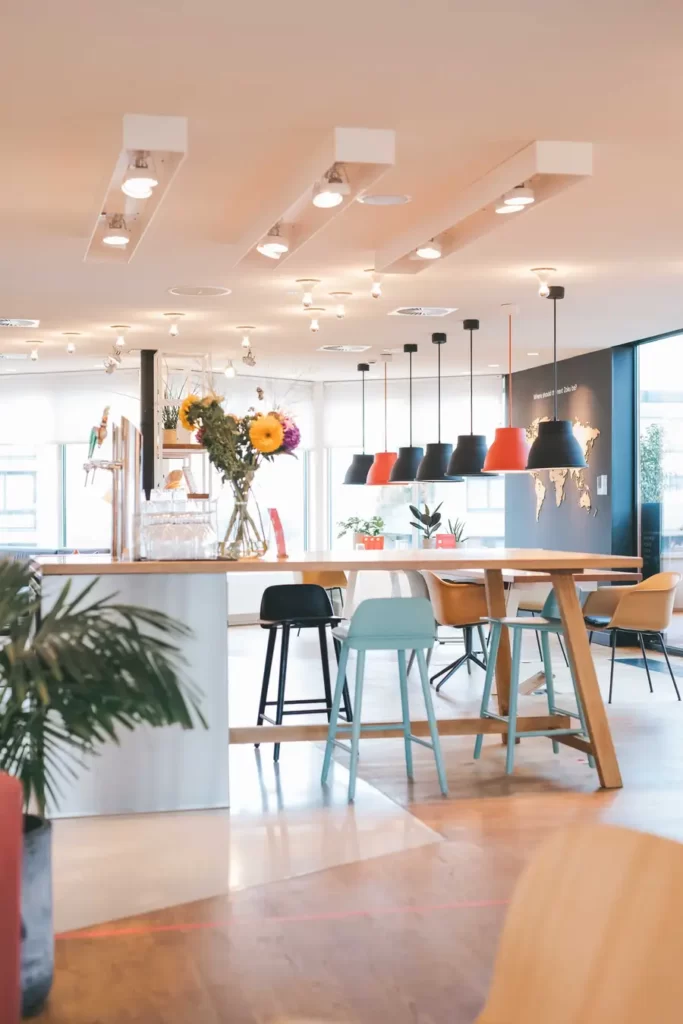

Design Attributes
The lively, welcoming atmosphere of the WorkCafé comes from its architecture, lighting, art, artefacts, sound, and other design elements.
The atmosphere of a WorkCafé is created by its design, which has a big impact on how workers act. Employees always say that “atmosphere” is the most important reason why they use the WorkCafé for both individual and group work.
Each company and brand has its own elements that make up a WorkCafé design. Explore design features with your key partners to make sure they match your brand, your organization’s culture, and the overall WorkCafé experience you want to create.
Things to think about are the setting, lighting, music, aromas, and artefacts that inspire.
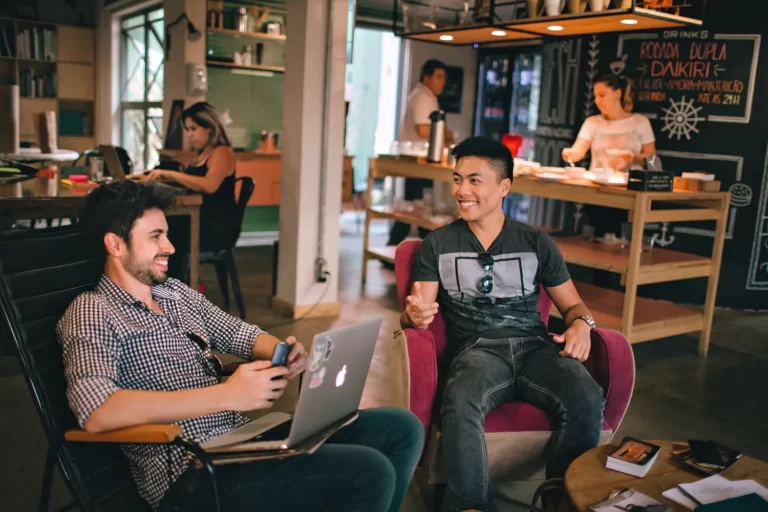

Intergration Of Technology
For the dynamic spaces in a WorkCafé to be used well, technology must be integrated in a way that doesn’t get in the way. This helps every user do their best work.
Technology can help people share information, make content, work well together locally and remotely, and have a better time at work. Services for workers (like power, Wi-Fi, help with presentations, tools for sharing content, etc.) should be easy to find and useful right away. Support for tech problems, which is part of hosting, also helps improve the way technology is used.
Personal
Integrated technologies can affect how employees like to work and how easy it is to do their jobs, which can help them be more productive. As an example, scheduling technology built into shared spaces helps workers choose the best place for their work process and style, whether they are working from home or on-site.
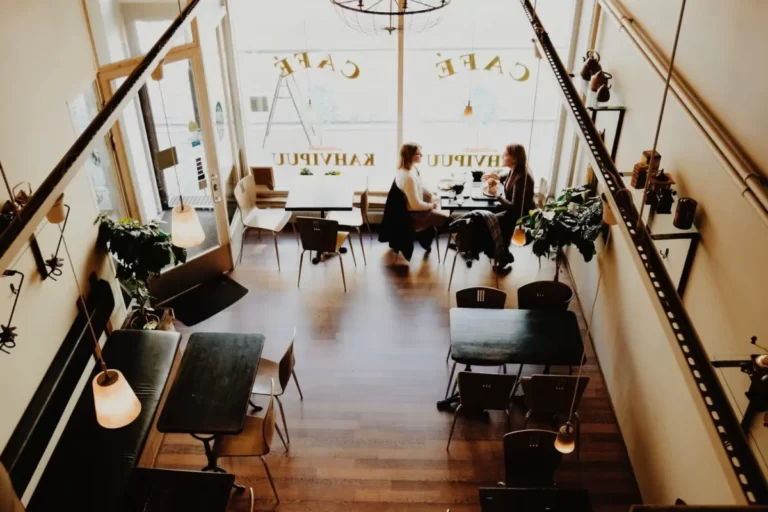

Organizational
The space is run more efficiently with the help of an integrated technology platform that helps with monitoring, measuring, and managing the space. Getting information about how the space is used can help speed up decisions about how to run it. For example, knowing how much energy is used can help cut down on energy costs.
Hosting Characteristics
Hosting services help employees feel like they are part of the company and connected to each other. People know they are important when they are welcomed and helped with what they need.
At the end of the day, hosting is about making employees feel like they belong to the company and to each other. By making employees feel welcome and supported, the company shows them they are valued. The right host can also help break down silos within a group by bringing people together, fostering relationships, and making sure tools, technology, and space are used in the right way.
Also, WorkCafé hosting services, whether they are self-service or facilitated, show that an organisation understands how hard it is for employees to balance work and life in a 24/7 global environment.
Hosting services that help with work needs, like printing and work tools that employees can borrow (flip charts, markers, whiteboards), and an on-call concierge/tech guru who can help with any tech problems. Your employees also need help with the room controls and in-room lockers lock up room, secure it, data capture support (tools and services) and On-demand web tool for reserving room service.
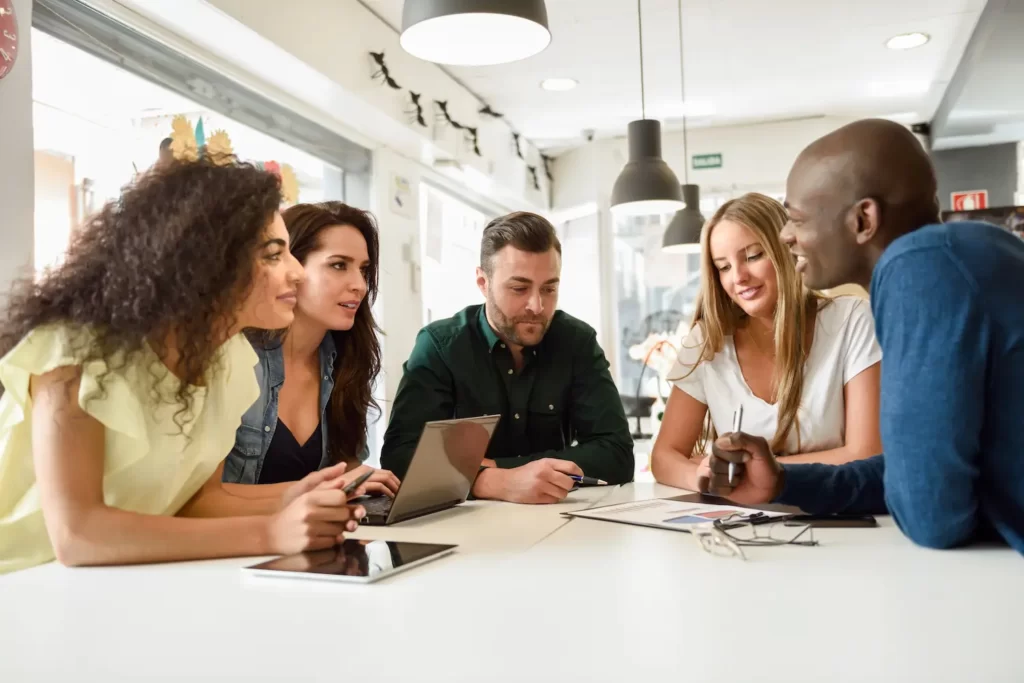

Hosting services that meet each person’s needs, such as calling a taxi for guests and helping them with their bags, letting them use their own lockers, giving them access to an ATM, and serving food and drinks at the same times every day. These personal concierge services help employees do their jobs better.
Getting to Know Colors
Colours have a lot to do with how we feel, and if you use them well, you can make people feel something right away. For example, the colour blue can be a great choice for a cafeteria because it makes people feel calm and peaceful. While the colour yellow makes you feel awake and alert all the time. Adding pops of colour between neutrals not only makes it easier on the eyes but also plays with your mood in a subconscious way.


Known Information
Material that is out in the open creates a warm and friendly atmosphere. Concrete has become the new cool. Concrete is strong and can be used in almost every kind of setting.
Wooden look
Browns with different shades and textures, a hint of a brick wall, and accent lights can help bring in that old, rustic charm. This kind of space makes you feel at home and warm, which is just what you need to find a good balance between work and personal life.
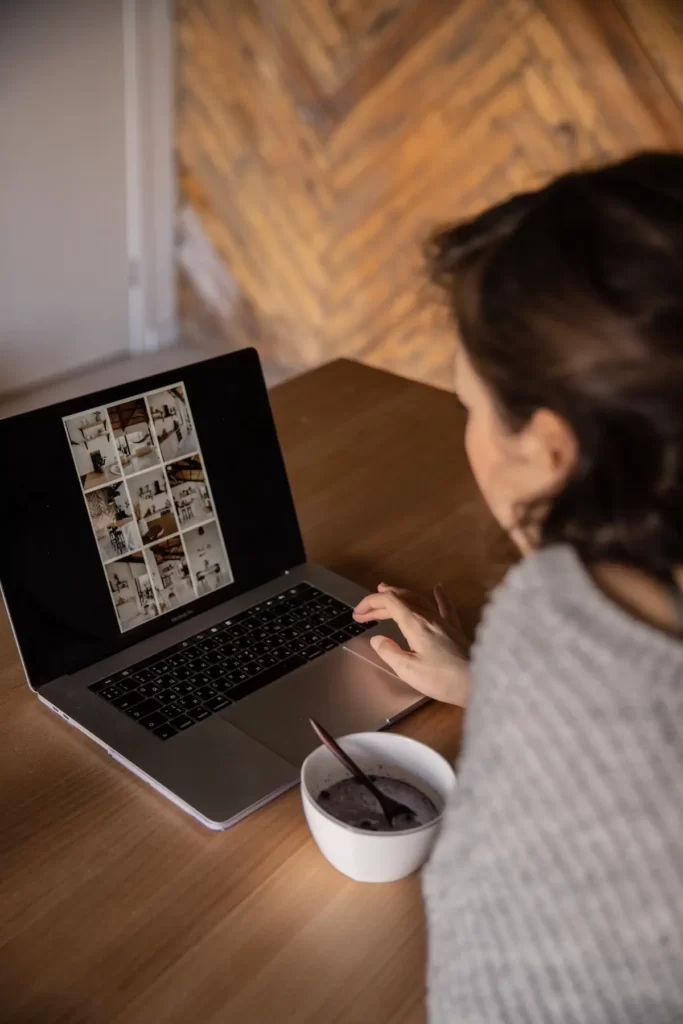

Blocks of Color
Colour blocking is a style that was popular in the 1960s and is now back in style. By learning about the colour wheel, you can put it together with bold, bright, and nice colours to make a space that is simple but still looks nice. This style has a lot going for it, including the fact that it only needs one material, which is paint.
Unique Look
One option is to go for a fun, uptown style. Since many people in an office cafeteria are in their 20s and 30s, the vibe can be young and fun. One good thing about this style of design is that old materials can always be reused or repurposed. More is always better.
The Shadow Play
There should be a lot of light in the cafeteria. Most lighting can come from natural light, with a lot of light coming in from the outside. This makes the space not only well-ventilated but also refreshing and roomy. Lighting can also be used to set a mood, draw attention to something, or add style.
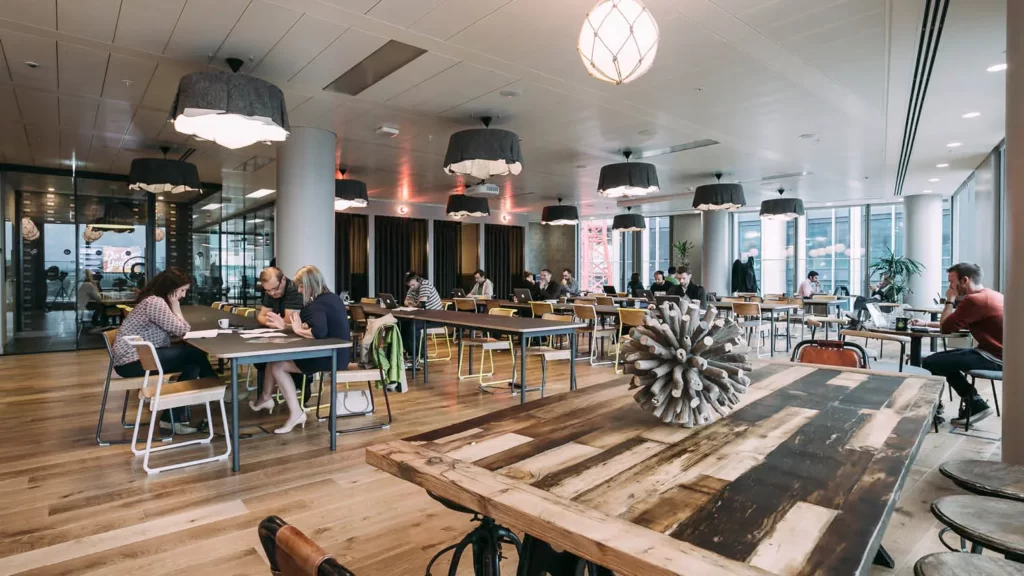

Using natural things in design
Getting a little more oxygen never hurts. Your office cafeteria can have green plants hanging from the ceiling, as vertical gardens, or in pots. This adds life to the room, makes it feel calm and fresh, and helps reduce stress. A cafeteria can also add a touch of nature with stone accents and water features.
Technology geared up
A modern corporate cafeteria needs spaces that are tech-savvy. Anyone can get an idea for something new at any time. In this case, a space like a cafeteria should let people work and meet anywhere.
Bring back an old favourite Woodwork
Different materials and colour schemes are used to make up an interior design. The space feels warm and cosy because of the earthy colours and wood finishes.
Plan using different ways to sit
It is very important to find a balance between how things work and how they look. Minds are made to always think of new ideas. So why add only one type of seating to such a space if you want people to be able to move around?
There are many different types of seating that can be used in a cafeteria to suit different activities and moods.
Last not but least, seating and furniture, are the most experiential elements in any cafeteria design. Office furniture and finishes have to meet certain standards set by the company, but the design team had more freedom with the restaurant, cafeteria, and coffee shop.
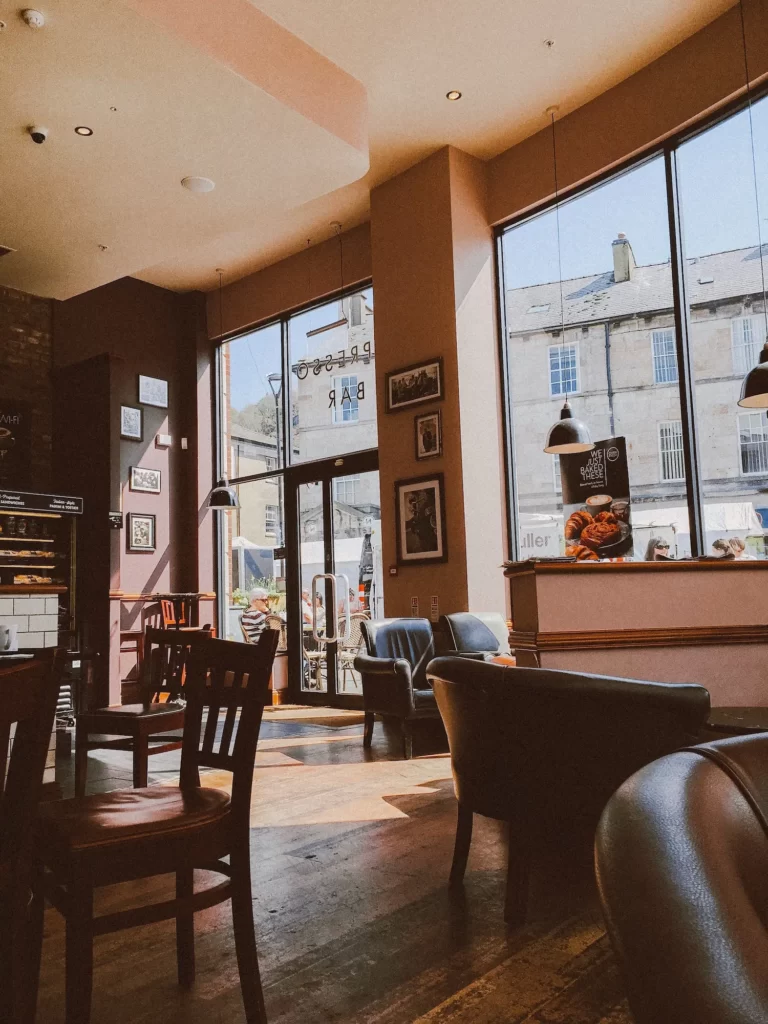

We were able to be creative with the project, but we had to work within the budget and the goals of the users. The result is a mix of a business-like look, a warm feeling, and a techy edge.
Cafeteria Furniture and Equipment
Even though these rooms have different names, they usually have the same kinds of furniture and equipment that can help make the employee meal experience better.
In the dining area, tables and chairs for 2, 4, or 6 people are usually set up so that people can sit around and eat together. Since business teams may eat lunch together while meeting, it can be helpful to have furniture that can be moved or several larger tables.
Even though not all companies give their employees full meals, they still need a place to store and prepare food. We’ve seen stoves, ovens, coffee machines, microwaves, refrigerators, cereal bars, coffee makers, and dishwashers.
Because cafeterias need to fit a lot of people, they tend to be big rooms. To make the most of the space when it’s not being used for eating, companies often use furniture that is easy to move.
Proper acoustics: When dozens or even hundreds of people get together to eat and talk, the noise level can quickly rise to a point where it is uncomfortable. We make sure that your cafeteria design includes good acoustic treatments to cut down on the loud noise that can sometimes happen in cafeterias.
In this particular case, the project had to be done in stages because it was in a building that was already in use and there was work or construction going on in the spaces next to it. This required close coordination with the general contractor during construction administration.
Cafeteria Design: A case study
This is an example of how the client wanted to change their whole campus to make the buildings more modern and good for working together. They wanted to save money and try something new, so they chose an open, modern space where people could get drinks and snacks after work. The design team also had to find the right look and feel for the space, since employees from IT to marketing and operations would be using it.
The company also wanted to give its food service company a state-of-the-art building that was flexible, had self-service registers and had other helpful features.
We gave everything a lot of thought and took the time to do it right. We visited other sites and worked closely with the design team, among other things.
The space would be best with an organic, softened approach, but it had to work with the building’s angular, straight-lined footprint, which was difficult. There are many problems like these with designing for people.
Wearing the badge of empathy and employee satisfaction proudly –
The resulting restaurant and coffee shop give employees a place to hang out that feels like they’re not at work, even though they’re still in the building.
We wanted to give people different ways to use the space, from different types of seating to different lighting. Employees can find places that meet their needs, whether they are having a quick meeting or taking a break from work.
We see a lot of one-on-one meetings taking place in the space. The coffee shop has done really well.
The cafeteria and kitchen are set up to handle changes in the number of people using them and in the meals they serve.
It’s a change, just like everything else in food service. We can try out new ways of running the cafeteria and restaurant based on how the spaces are being used.
Along with providing much-needed food service, the project shows that the company cares about how its employees feel. When employees were told to move into the building, the dining area designs made them excited about their new space.
This means that the company is putting money into these spaces and this campus. When people come in the front door, one of the first things they see is the dining area. When job candidates take a tour of the areas they might work in, they see how busy the dining area is and how often it’s used. We made a great space that has been loved by everyone. It has helped us change the look of the campus completely and incorporate design trends from all over the world.
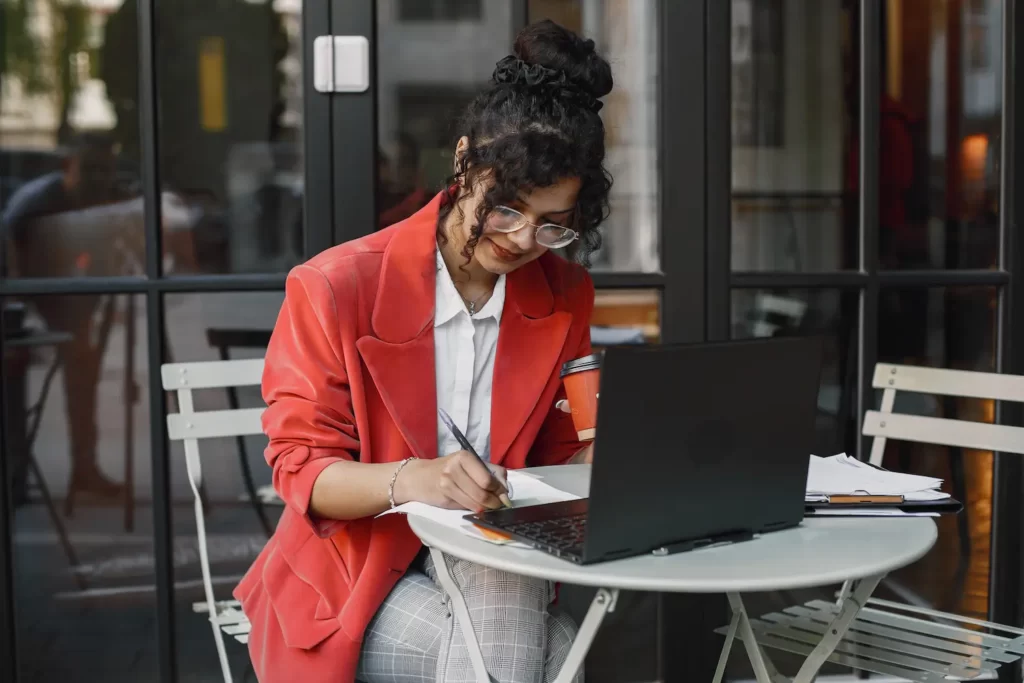

Conclusion
“Design creates culture, culture shapes values. Values determine the future.” – Robert Peters
Most of the time we’re busy, we’re at the office. While we’re there, let’s break the boring design pattern and make the space around us more interesting. People say, “Anything can happen over coffee, even a great idea!” so it’s worth a shot, an espresso shot is even better!
Changing the way your office looks after a pandemic? Don’t forget to give the cafeteria the attention it deserves. We can help you work it into your plan for a healthy workplace.